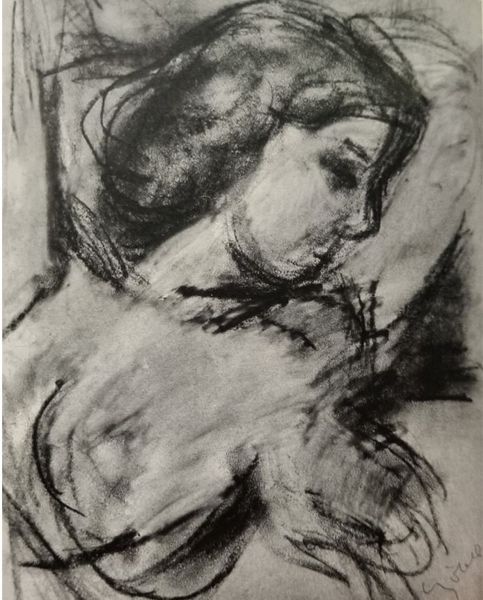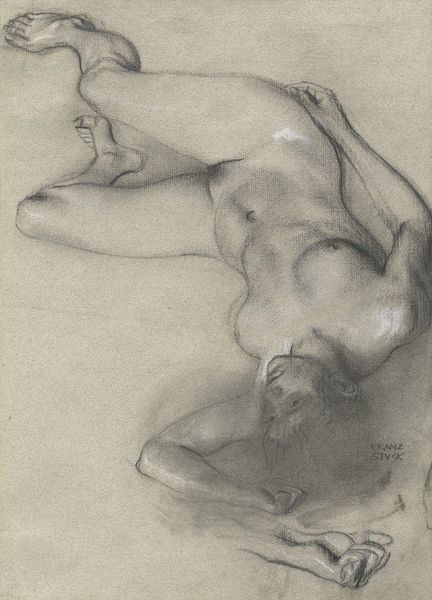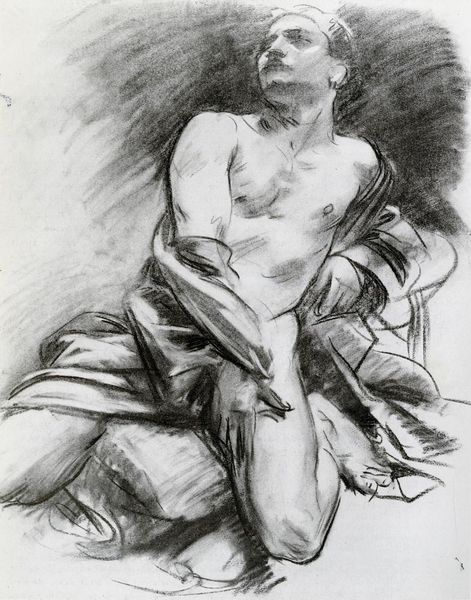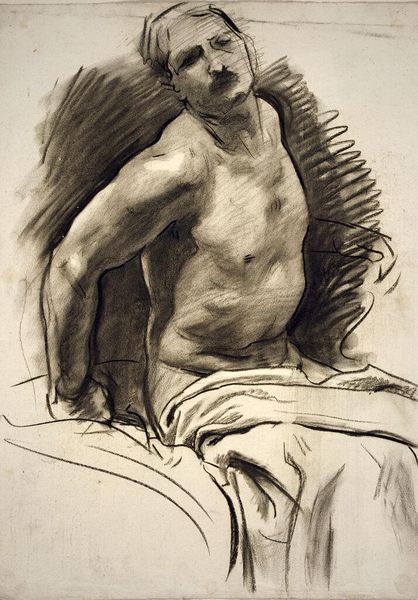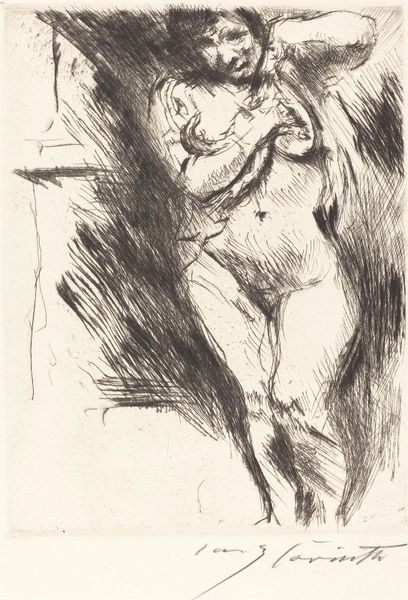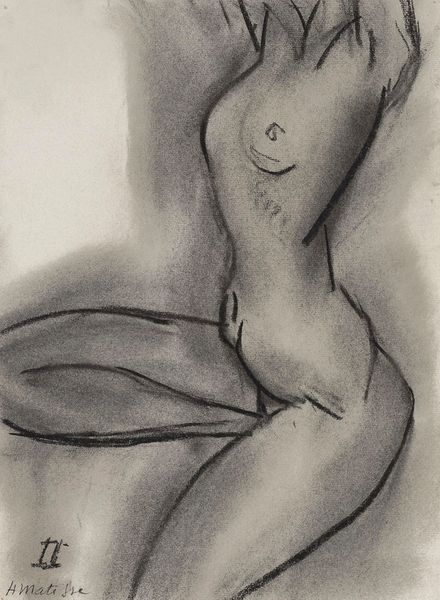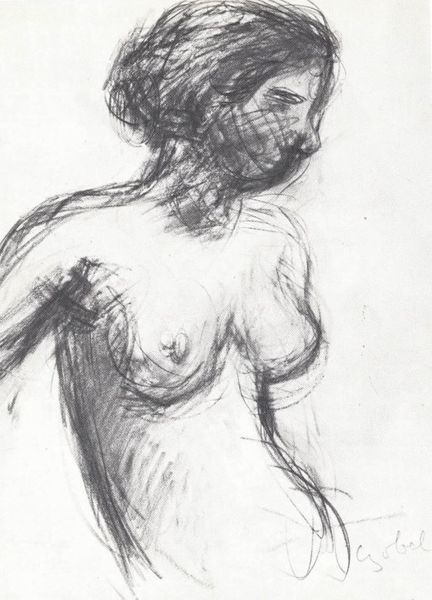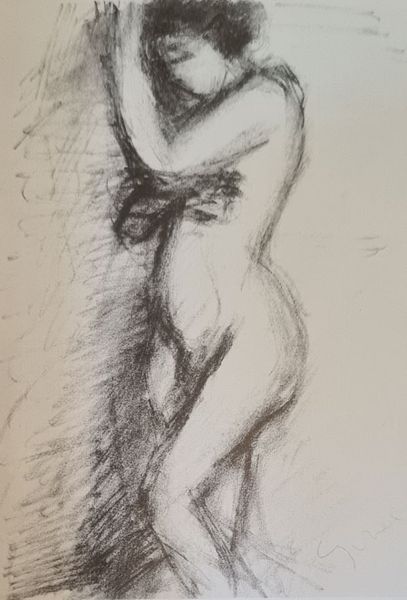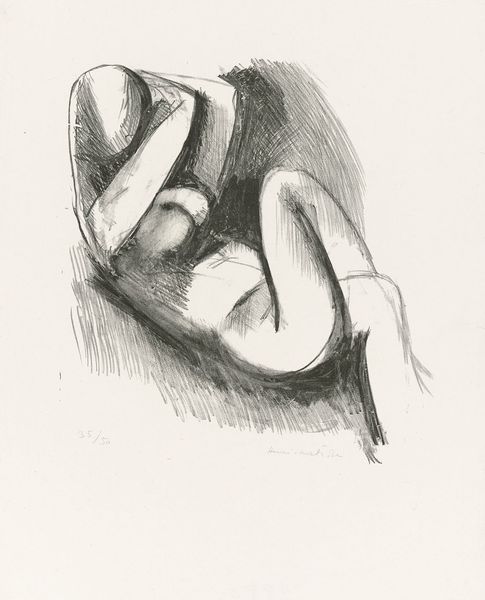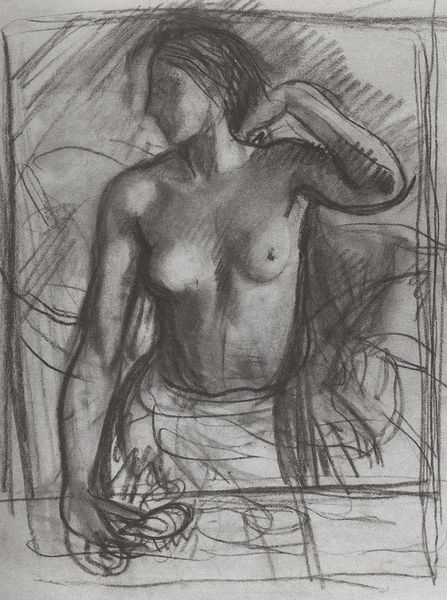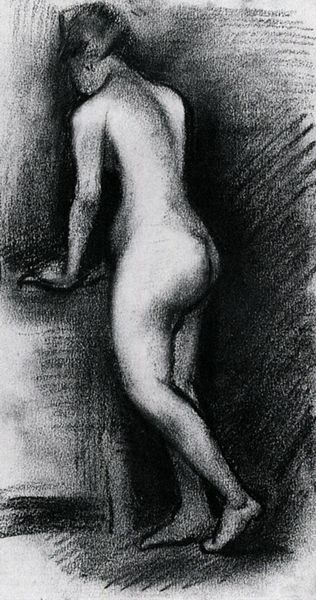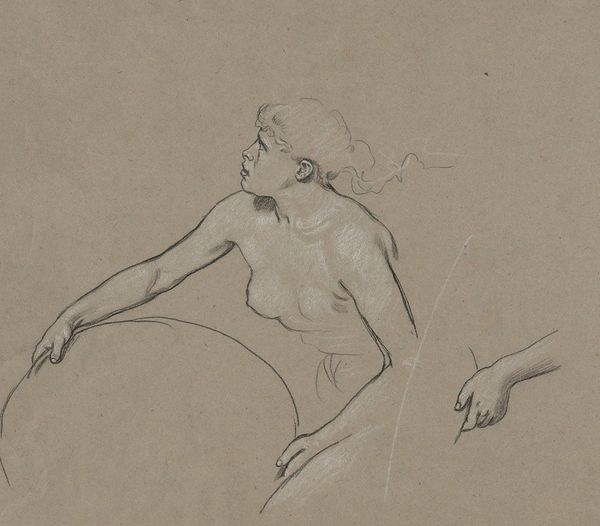
Copyright: Public domain
Curator: It feels like a scream captured in graphite. Editor: Indeed. This drawing by Käthe Kollwitz, entitled "Death Seizing A Woman", dates from 1934 and is a potent example of her exploration of death and human suffering through the medium of charcoal and pencil. Curator: Charcoal allows for such intense tonal variation. Look at the texture – it feels coarse, almost like burlap. The intense black smudges pull you in. What kind of paper would have even held this much charcoal? The physicality of this act feels important. It speaks of raw, unflinching labor. Editor: The German Expressionist movement was very focused on such subject matter, of the human form against a backdrop of overwhelming struggle. And while much of the contemporary art world had shifted its gaze, Kollwitz remained a forceful figure, documenting what she saw happening around her, and making potent visual arguments about class, war, and ultimately loss. The drawing’s place within art history demonstrates her unflinching perspective. Curator: But the rawness... you can see how the graphite has been worked and reworked. It really focuses my attention not just on the image itself, but the hand that created it, grappling with material, forcing it into shape. I wonder, what erasers were available to her at that time? How much did that constrain or augment the iterative process? Editor: Knowing Kollwitz lived through the first World War, and witnessed the rise of Nazism at the time, deeply affected the tone and style of her work. Images of mourning and struggle became part of the public conscience. This drawing isn't just a representation, but an outcry about a culture undergoing intense, horrific change, and an indictment against the political powers at play. Curator: It's not just the event, but the means of rendering it, the tangible, almost brutal use of the material that transmits so much visceral meaning. Editor: And its presence in major exhibitions, then and now, continually raises the issue of responsibility that society has to its most vulnerable. Kollwitz was clear-sighted in this. Curator: I keep seeing in my mind, those workers crafting their art in the factories! I appreciate these poignant juxtapositions—it adds so much to what I perceive here today! Editor: It offers a complex dialogue between artistic intention, social consciousness, and how these artworks enter and influence the cultural sphere.
Comments
No comments
Be the first to comment and join the conversation on the ultimate creative platform.

